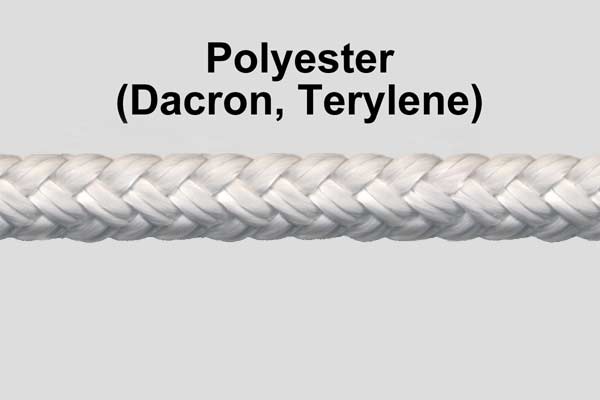Rope identification
- Thread starter johnnytheboy
- Start date
You are using an out of date browser. It may not display this or other websites correctly.
You should upgrade or use an alternative browser.
You should upgrade or use an alternative browser.
woodspirits
Bushcrafter (boy, I've got a lot to say!)
It's decieving as that's a tiny anchor it's only just thicker than para cord, but it's important it sinks!
Sorry it it says military grade dacron?
Any help is much appreciated!
Sorry it it says military grade dacron?
Any help is much appreciated!
[h=3]Dacron[SUP]®[/SUP], Terylene[SUP]®[/SUP] (Polyester):[/h] Polyester
Polyester
Polyester
History: The Polyester, Terylene[SUP]®[/SUP], was developed by Imperial Chemical Industries in 1941. The rights were purchased by duPont in 1946 who subsequently developed the related similar fiber, Dacron[SUP]®[/SUP]. The introduction of Dacron[SUP]®[/SUP] rope in 1953 changed things again. The practical benefits of Nylon[SUP]®[/SUP] were retained with the critical difference that elasticity was markedly reduced. In 1957 Samson introduced the Double Braid construction, and Dacron[SUP]®[/SUP] ropes were rapidly adopted for halyards, sheets, and static climbing ropes.
EDIT////////////
From the picture you've got it looks like it's a twisted rope rather than braided
 Polyester
PolyesterPolyester
History: The Polyester, Terylene[SUP]®[/SUP], was developed by Imperial Chemical Industries in 1941. The rights were purchased by duPont in 1946 who subsequently developed the related similar fiber, Dacron[SUP]®[/SUP]. The introduction of Dacron[SUP]®[/SUP] rope in 1953 changed things again. The practical benefits of Nylon[SUP]®[/SUP] were retained with the critical difference that elasticity was markedly reduced. In 1957 Samson introduced the Double Braid construction, and Dacron[SUP]®[/SUP] ropes were rapidly adopted for halyards, sheets, and static climbing ropes.
- Properties: Dacron[SUP]®[/SUP] ropes stretched much less (about 3.5 - to 5% elongation at 30% of breaking strain) and were not weakened by water. Like Nylon[SUP]®[/SUP], Dacron[SUP]®[/SUP] has a relatively high density. It also melts before it carbonizes and the end of a rope can be fused using heat. It exhibits negligible creep under load and has excellent resistance to ultra violet light.
EDIT////////////
From the picture you've got it looks like it's a twisted rope rather than braided
Last edited:
Any idea where I can buy some Mousey? I can honestly say I've never seen it in the shops or online!
I believe Dacron is just a brand / company name. If you search for 3 strand polyester rope, you should find something.
http://www.ropesandtwines.com/proddetail.asp?prod=8mm_polyester_rope_per_metre
You might well find it cheaper elsewhere.
B&Q probably have it.
You might well find it cheaper elsewhere.
B&Q probably have it.
Last edited:
Arent crossbow prods strung with Dacron? Sure the one i had 30 odd yrs ago was waxed Dacron.
Mine is. I think I still have a reel of the stuff somewhere.
Mind you I made it 20+ years ago so things may have moved on a bit
Similar threads
- Replies
- 1
- Views
- 341
- Replies
- 2
- Views
- 247
- Replies
- 0
- Views
- 144

